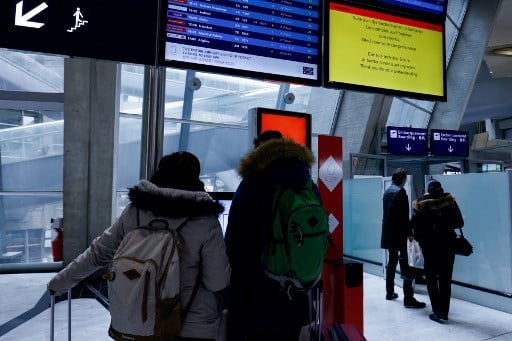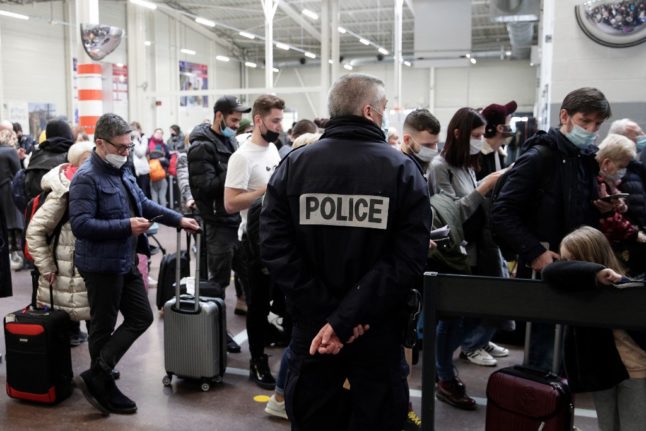The 2021 Ironman 70.3 World Champion, UK’s Lucy Charles-Barclay, may not be able to participate in the next race of the season, on the 21st of May in Kraichgau, Germany.
The reason? She has already used 88 of the 90 days she could spend in the Schengen area over a 180-day period, the athlete said on Instagram.
Non-EU travellers, who since Brexit include Brits, have to be aware of the 90-day rule when it comes to visiting the EU and Schengen area.
People can travel without border checks within countries that have signed up to the Schengen Agreement. These include EU members except for Bulgaria, Cyprus, Ireland and Romania. Non-EU members Iceland, Liechtenstein, Norway and Switzerland are also part of the Schengen zone.
Non-EU passport holders who are allowed to visit Schengen countries without a visa can stay for maximum 90 days in any 180-day period, regardless of the number of states they go to. This means frequent visitors to EU countries, such as those who own second homes there, need to keep a careful check on how many days they have built up.
READ ALSO: How does the 90-day rule work for the EU/Schengen area?
The 90-day limit is meant for visits only, so people who intend to become residents have to follow different procedures.
Anyone who wants to stay longer than 90 days in every 180 must apply for a national visa for the country they intend to visit.

If overstayers are caught they will most likely be ordered to leave, fined or even banned from the Schengen zone for a period of time. Since Brexit, these rules also apply to UK citizens, to the frustration of many second home owners in France and Spain.
The European Union plans to introduce a new border system, the EU entry/exit system, that will require biometric data, including facial images and fingerprints of all passengers entering the EU, helping authorities to systematically identify overstayers.
Travellers refused entry over the 90-day rule
Overall, some 141,060 non-EU citizens were refused entry into the EU in 2022 for various reasons, which are explained below.
Overall the largest number of refusals were reported by Poland (23,330), Hungary (15,780), Croatia (11,800) and Ireland (9,240). Ukrainian citizens accounted for the largest number of refusals, as has been the case in recent years.
According to the latest data published by the EU statistical office Eurostat, in 2022 almost 20,000 people (19,290) were refused entry at the Schengen area’s external borders because they has already exceeded the 90-day limit on previous trips.
This figure was a slight rise on the 2019 figure of 17,695. In the 2020 and 2021 the number dropped to around 10,000 travellers refused entry for having passed the 90-day limit, but the drop can be explained by fewer people on the move due to the Covid-19 pandemic.
Of the 20,000 refused entry in 2022 over the 90-day rule, more than two thirds were stopped at the Polish (7,570) and Hungarian (5,475) borders. Again most of them were from Ukraine as was the case in 2019. It is not clear whether these were recorded before Poland and Hungary opened their borders to the hundreds of thousands of Ukrainian’s fleeing the Russian invasion in late February.
Among the countries covered by The Local, Italy refused entry to 695 non-EU citizens because of the 90/180 Schengen rule; Germany denied entry to 465; Spain 345; Switzerland 175; France 170; Austria 125; Sweden 40; and Denmark 30, according to data published recently.
Despite the confusion for Britons after Brexit it appears most travellers are at least aware of the 90 day rule given the small number that were refused entry.
Only 195 British citizens were refused entry into European countries in 2022 because of the 90 day rule. Of these, Switzerland rejected 25; Sweden, Austria and Denmark 10 each; France 5. The figure for Spain read “zero”, suggesting Spanish authorities had not made the data available.
For US citizens the number of travellers turned away at the EU borders last year for having already passed the 90-day limit was 90. The numbers were even smaller for Canadians and Australians but this will be likely linked not only to a low number of frequent travellers to the EU from distant countries. In other words if they have passed the 90 day limit they are unlikely to return within the 180 day period.
As for travellers from India, the 90-day rule does not apply to them because they need a visa to enter the Schengen area.
Other reasons non-EU citizens are turned away
Apart from the 90 day rule there are other reasons why non-EU travellers will be turned away at Europe’s borders ranging from whether they are considered to be public threat or an alert has been issued about them to the fact their passport may be out of date or they have no valid visa or residency permit. Officially non-EU visitors could be turned away if they are not considered to have the means to pay for their trip, however the figures show only 10 people were refused entry (all to the Netherlands) for this reason.
READ ALSO: Are UK tourists in Spain really being asked to prove €100 a day?
Whilst most non-EU travellers have been aware of the rules around valid travel documents it appears many Britons have been caught out since Brexit.
Visitors entering Schengen countries must have a document issued in the ten years before the date of entry and valid until three months after the planned departure date. Since Brexit many British travellers, unaware their passports were invalid, have been turned away at airports and ports.
France for example denied access to its territory – and the Schengen area – to 105 UK citizens because they held no valid travel document.
The total for British citizens turned away from European countries because of invalid travel documents was 335, with 40 denied access to Italy and 30 to Switzerland.
In total 1,305 UK nationals were denied entry at the European external borders in 2022 because of reasons ranging from overstays to no valid visa or document, insufficient means of subsistence or being considered a public threat.
France – which has the largest number of arrivals from the UK due to its proximity – recorded the largest number (440), followed by Switzerland (150), Sweden (75), Italy (60), Germany (45), Denmark (40), Austria (15). Data for Norway was not available at the time of publishing.
Sweden, where authorities have come under pressure over their treatment of British residents after Brexit, refused entry to 40 Britons in 2022 who did not have a valid visa or residence permit.
When it comes to other nationalities, some 1,020 American citizens were turned away at Europe’s borders for various reasons in 2022 and the figure for Indian nationals was 2,045. Just 140 Canadians were turned away and 50 Australian nationals.



 Please whitelist us to continue reading.
Please whitelist us to continue reading.
Member comments